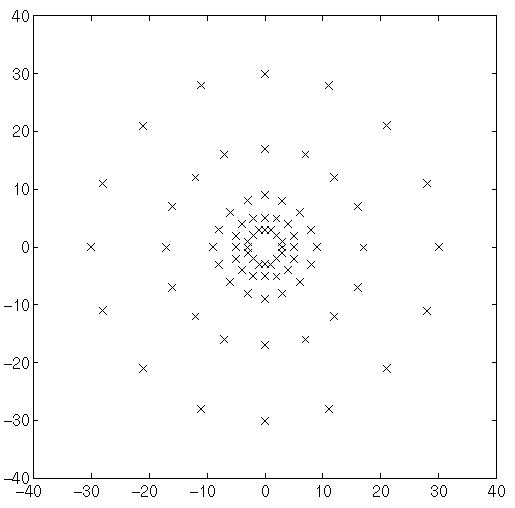
Human beings also make use of non-uniform sampling to select relevant visual information. The arrangement of photoreceptors in the retina is such that the sampling frequency decreases from the centre (the fovea) to the periphery.
We can emulate this feature with a retinotopic sampling grid obtained by Log-polar mapping in the complex plane. Due to the particular construction employed, the density of sampling points decreases exponentially from the centre to the periphery of the retina.
In order to have a more accurate modellization of the workings of the visual cortex, it is convenient to apply the sampling retina to the Gabor decomposition of an image rather than directly to its grey-level values. Therefore, a vector of Gabor responses is extracted at each retinal point.
The use of a non-uniform sampling grid allows focusing the computational power on he areas of interest in the image. Since the grid is made up of a low number of points, computation of Gabor responses by direct filtering in the image domain becomes convenient. As a consequence, active vision applicationsare now within reach.